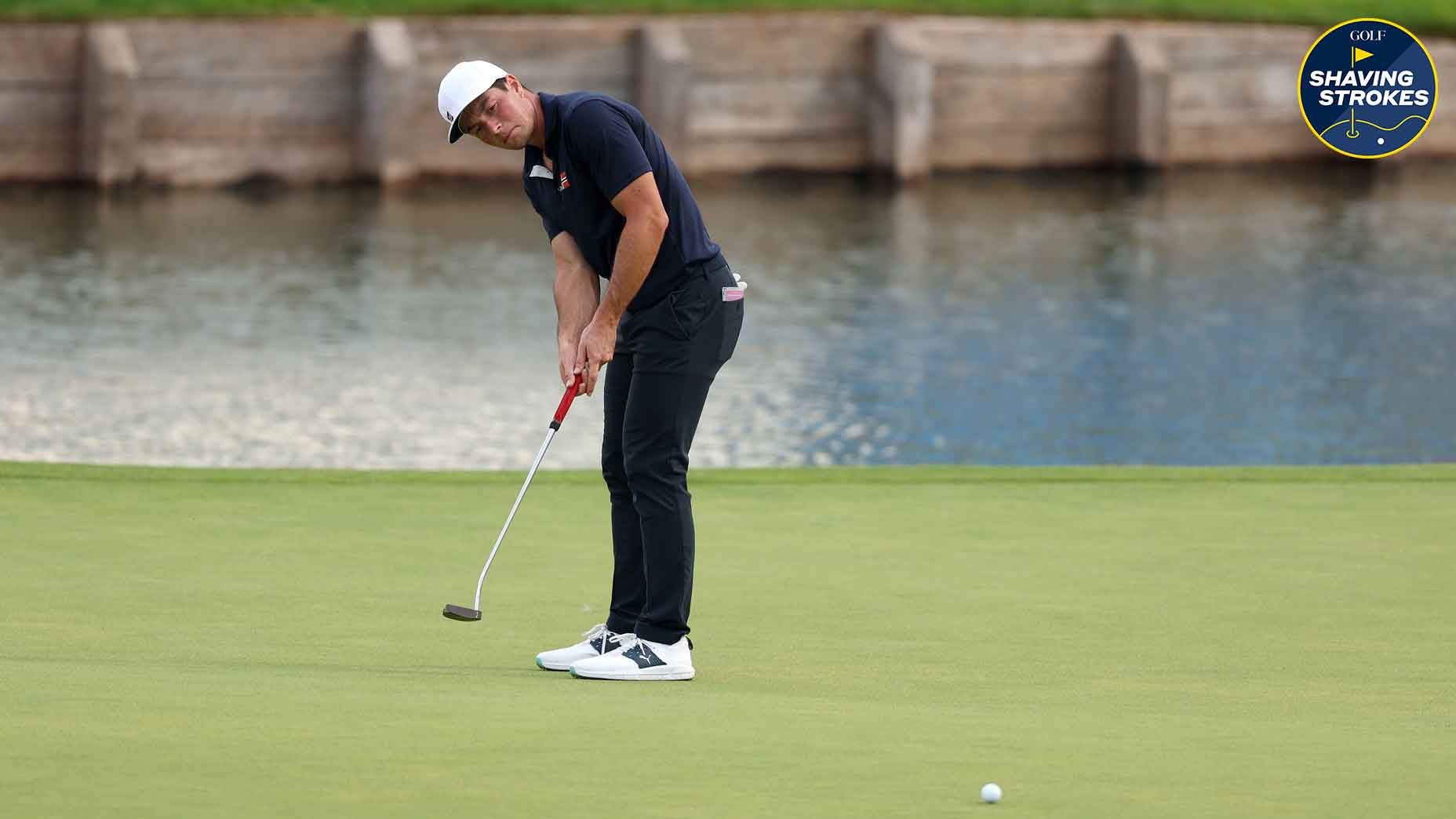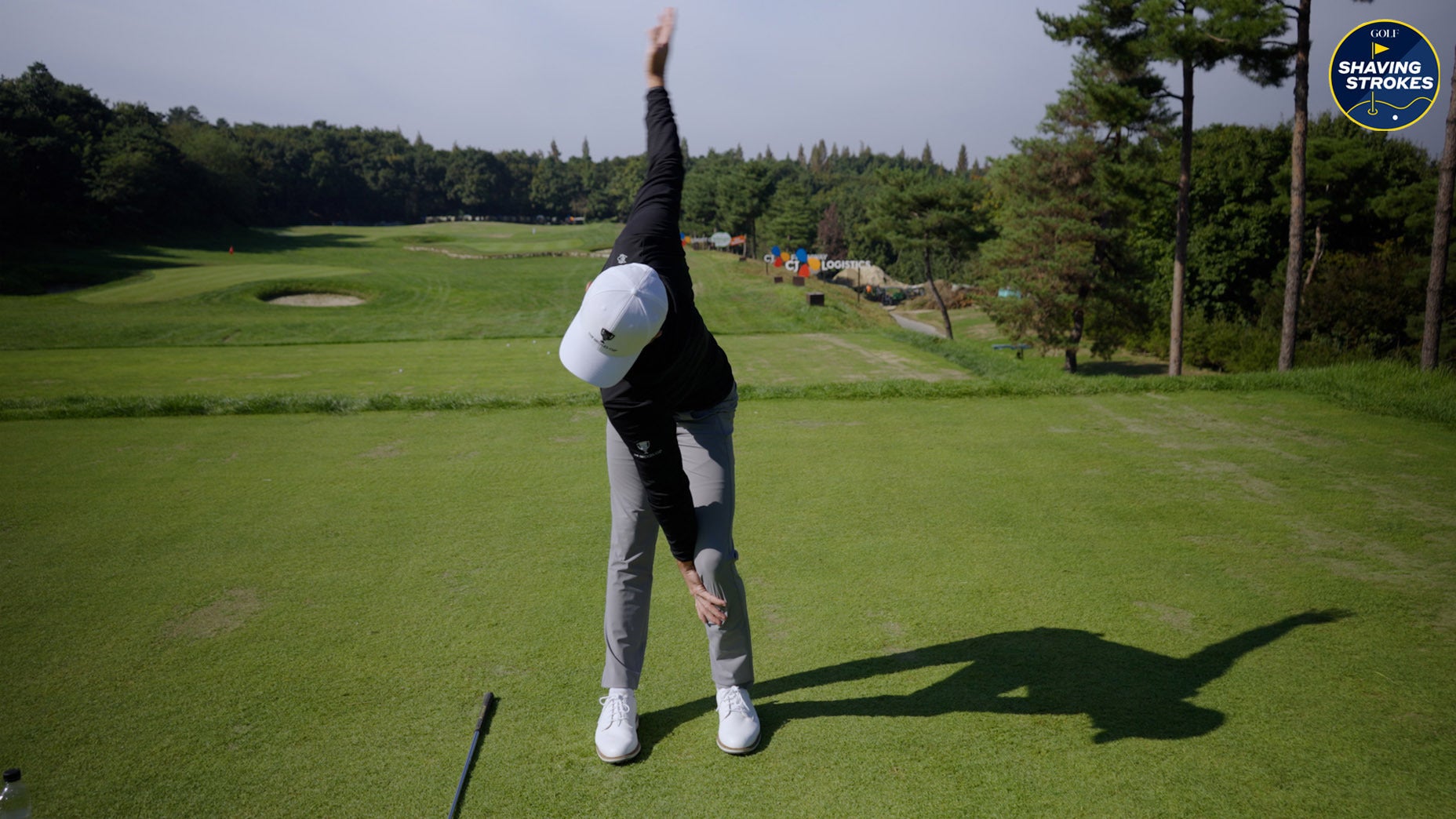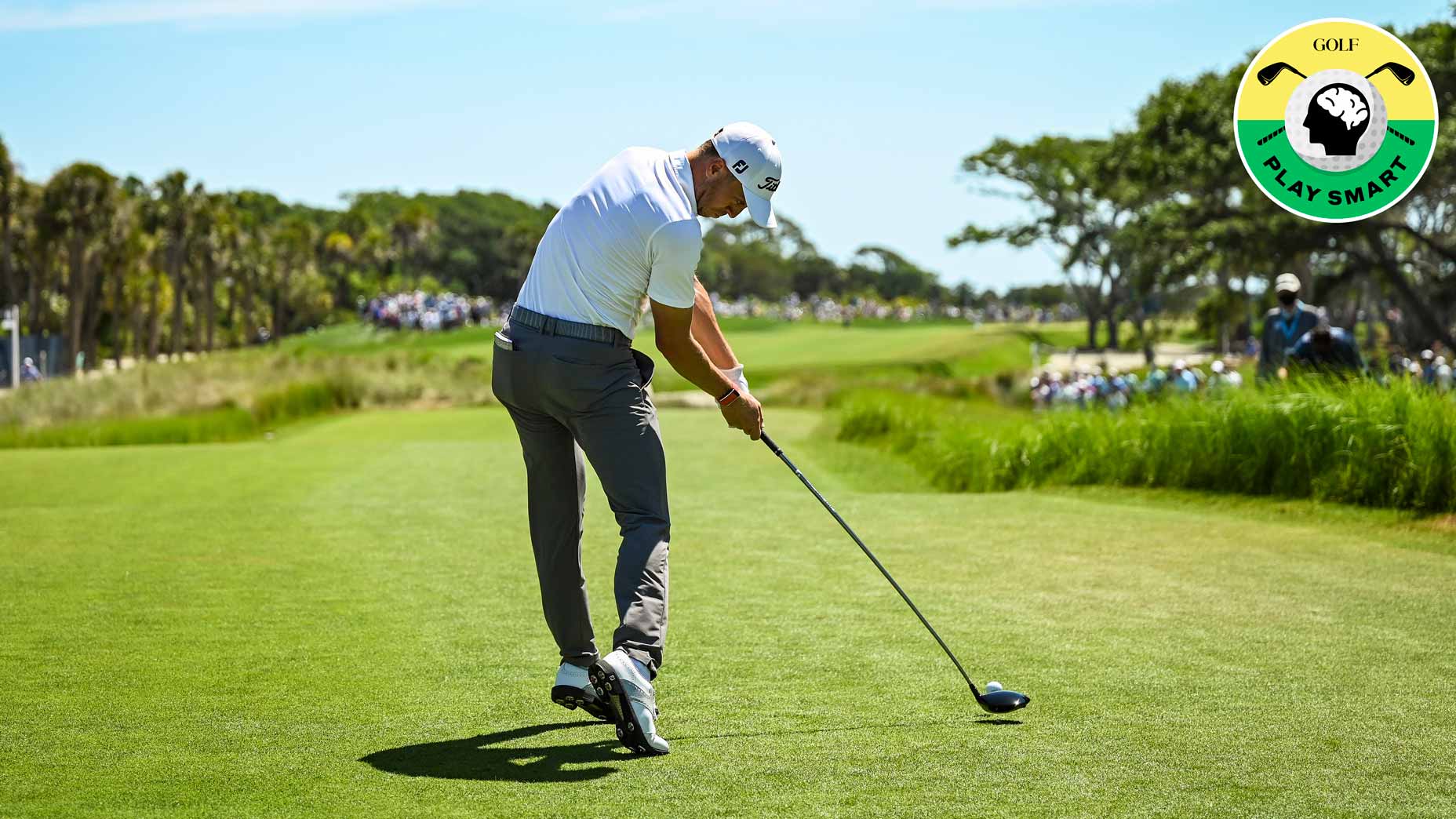Struggling off the tee? This simple fairway finder is your secret weapon
- Share on Facebook
- Share on Twitter
- Share by Email

Hitting more fairways is imperative if you're hoping to lower your golf scores. This fairway finder will help.
GOLF.com
For as long as I’ve played golf, I’ve subscribed to a pretty common notion: When it comes to hitting driver, just grip it and rip it, baby!
The problem with this mentality? When you’re inconsistent off the tee, you’re doing more harm than good, and hitting and hoping can just adding unnecessary strokes.
Instead of hitting fairways, you’re left searching for the ball in the woods or thick rough, leaving you punching out or hitting a difficult approach shot.
Use this quick fix to get rid of round-wrecking slices, says Top 100 TeacherBy: Nick Dimengo
Look, some lucky people can just stand up there, grip it and rip it. Unfortunately, that’s not many average golfers — which is why being smarter is the way to shoot your best scores.
If you’re someone who needs some help off the tee, GOLF Top 100 Teacher Scott Munroe suggests using a fairway finder — which sacrifices some distance for much more accuracy.
You may not get all the “oohs and aahs” from playing partners by using this type of shot, but, hey, you can flex your muscle by walking up the fairway to your ball while they hunt theirs down in the trees. The video below shows you how to hit this effective tee shot.
Try this fairway finder for more success off the tee
Munroe starts by asking me a test question, having me guess what the three most important clubs in the bag are.
“Driver, putter, 7-iron,” I reply.
“Why’d you say the driver first?” he responds.
“I like to drive it 300 yards,” I quip.
“You told me in the past that you’ll miss some fairways, but if you can hit every fairway, I’ve got a little tip on how to do that,” Munroe assures me.
So what’s the secret to hitting more fairways off the tee? It’s not necessarily gripping and ripping — as most amateur golfers make the mistake of doing. Instead, Munroe says it’s using a lower-flighted shot that resembles a stinger.
How to hit Tiger Woods’ patented stinger on commandBy: Zephyr Melton
“It’s going to be a low shot that you can control it, and will help you hit the fairway every time,” he says.
Munroe then explains the necessary adjustments in order to hit this type of tee shot.
“First, I’m going to tee it lower than we normally do, and I’m going to choke down on the driver about an inch, which will make the shaft stiffer,” Munroe explains. “My [ball-flight] is going to be left-to-right, but yours may be right-to-left, so I’m going to aim down the left side of the fairway and just hold onto the club.”
Munroe then addresses his ball, walking through the adjustments so I can see them in real-time.
“[My hands] are down on the handle, I’ve made the clubhead lighter and stiffer, I aim left, everything turns back [in the backswing], and when I come through, my [trail arm] goes straight out — which is going to control the flight,” he tells me.
After watching Munroe hit his shot, it’s my turn to give it a try.
A good reminder for amateurs: Use your normal setup and swing, with the ball position forward and feet flared just a tad.
Munroe then explains a good way to practice this type of fairway finder, telling me to use the targets on the driving range.
3 things most amateurs aren’t doing on the driving range (but should be)By: Jason Birnbaum, Top 100 Teacher , Nick Dimengo
“You’ve got these different targets, so I’m going to go yellow, red, green,” Munroe says. “If I change the pace [of my swing] and I want to hit the first one 100 yards, then each time I can get a little faster [to reach my preferred target.
“So being able to hit the driver different distances, rather than wondering how far you can hit the driver, you can hit it any distance you want.”
If you’re struggling off the tee and need a safety net, try this fairway finder on for size. With a little practice, it can help put you in better positions and lead to lower scores.

Rukket Sports Pathfinder Impact Mat™
$69.99
View Product
Latest In Instruction

Nick Dimengo
Golf.com Editor












